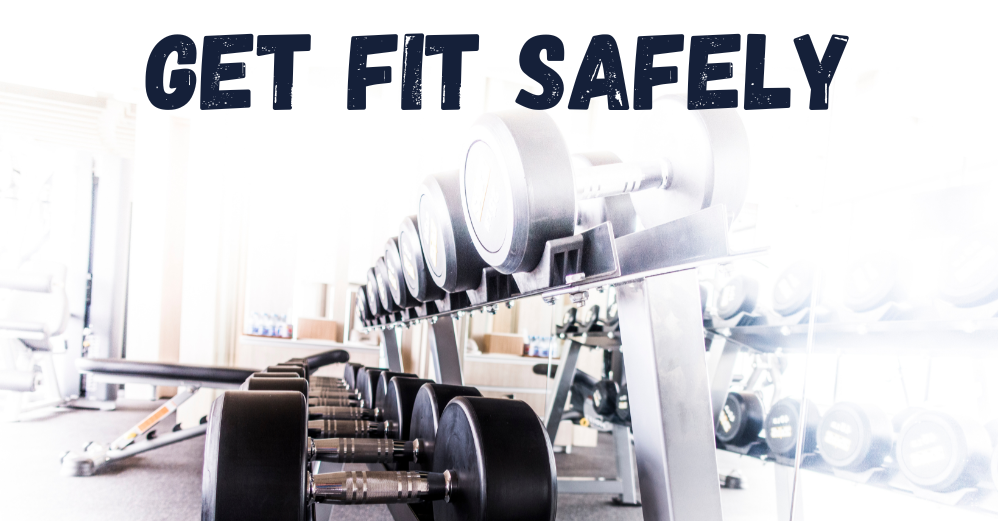Considering a workout regime that has you sweating it out six days a week?
It’s a bold move and one that can bring about some pretty impressive results, both physically and mentally.
But, as with anything that sounds too good to be true, there’s a bit more to it.
Let’s break down what committing to such an intense routine could mean for you.
Pro: Accelerated progress and greater health benefits
Starting a 6-day workout routine?
Brace yourself for quick results!
You’ll see faster weight loss, better muscle tone, and a boost in endurance.
More gym time isn’t just about looking good—it ramps up your overall health too.
Think smoother blood flow, better balance, and stronger posture, lowering your risk of things like heart disease and diabetes.
And it’s not just your body that gets a boost—your mind does too.
Regular workouts are great for shaking off stress, easing anxiety, and lifting your mood.
Plus, consistently pushing your limits each week keeps you motivated and feeling accomplished.
Con: Risk of overtraining
Overtraining is a real risk and can seriously disrupt your workout progress.
Pushing too hard without enough chill time can lead to exhaustion, injuries, and hitting a frustrating plateau.
Your muscles scream for some downtime to repair and get stronger.
Skipping those rest days?
It might slow your roll, bump up injury risks, and throw your goals off track.
Keep an eye out for tell-tale signs of overtraining like feeling wiped out all the time, your workouts starting to backslide, sleep issues, not feeling hungry, and getting sick more often.
Feeling any of these?
Might be time to take it down a notch and give your body the breather it needs.
Pro: Improvement in Habit and Discipline
Adopting an intense workout routine like sweating it out six days a week can do wonders beyond just shaping up your body.
It’s about crafting healthy habits and dialing up your daily discipline.
Think about it: when you carve out time for regular workouts, you’re also fine-tuning your time management skills.
Exercise becomes a non-negotiable, pushing you to plan your days with precision to fit everything in.
Then there’s your diet.
Regular workouts up your body’s need for quality nutrients to fuel muscle growth and recovery.
This naturally encourages better eating habits because, after all, good nutrition is essential to complement your workout efforts.
And let’s not overlook the sleep benefits.
More physical activity can lead to better sleep, helping you doze off faster and dive deeper into those restorative sleep stages.
Good sleep is crucial for muscle repair and stress management, boosting your overall well-being.
Con: Excessive Dedication to Training
Sometimes, the line between dedication and obsession in a workout regimen can blur.
An all-consuming focus on working out might lead you to ignore your body’s cues of pain and fatigue.
It can also cause you to neglect your social life or work responsibilities, or become overly fixated on your looks and gym stats.
This excessive commitment can even stir up guilt or anxiety if you miss a workout or decide to take a break.
It makes your workout routine feel more like a tightrope walk than a healthy path.
To steer clear of these pitfalls, it’s crucial to embrace a balanced and flexible approach to exercise.
Remember, rest and recovery are not just downtime—they’re essential components that enhance long-term health and keep your fitness sustainable.
Instead of chasing an impossible standard of perfection, aim for realistic goals that you can maintain and feel good about.
This shift not only protects your physical health but also safeguards your mental well-being, ensuring your workout routine enhances your life rather than consuming it.
Symptoms and Signs of Exercise Addiction:
|
Pro: Increased Productivity and Creativity
Incorporating a consistent workout routine into your daily life can do wonders for your productivity and creativity.
Regular physical activity isn’t just good for your muscles; it also boosts your brainpower in several compelling ways.
Firstly, exercise improves blood circulation, including to your brain.
This uptick in blood flow ramps up the production of neurotransmitters and promotes neuroplasticity, essentially rewiring your brain for better performance.
Moreover, these enhancements in brain function can help delay the onset of Alzheimer’s disease.
These physical changes in the brain translate into some impressive mental benefits.
You might notice clearer thinking, sharper concentration, and a surge in creativity.
Whether you’re at work, solving problems, or engaging in creative pursuits, a regular workout routine could be the secret to that extra edge. (Pubmed/6296269)
Con: Prolonged Pain and Muscle Fatigue
When you’re training hard and often, your muscles really feel the burn.
They undergo significant stress and might need more time to heal and regenerate properly.
If you’re experiencing muscle fatigue and pain that lingers for more than a couple of days, it’s a signal from your body asking for more recovery time between workouts.
Ignoring these symptoms can raise your risk of injuries and might even dial down the effectiveness of your workouts.
On top of that, prolonged muscle fatigue can drag down your quality of life, making everyday activities tougher and zapping your energy and well-being.
To fend off this prolonged pain and fatigue, consider mixing some lighter or moderate-intensity workouts into your weekly routine.
This approach eases the stress on your muscles, giving them the breather they need to heal.
Additionally, incorporating muscle relaxation techniques like stretching or massage can also help ease the pain while boosting your muscle flexibility and endurance.
Pro: Increased endurance and strength
Adding a consistent workout routine to your life does wonders for your endurance and muscle strength.
With a solid mix of resistance and strength training, you’ll see yourself performing better in all kinds of physical activities, whether it’s sports or daily tasks.
What’s more, regular workouts mean your body gets better at bouncing back.
This lets you handle more intense sessions without crashing into fatigue.
And as your muscles get stronger and your endurance builds, you’ll move more efficiently.
This not only cuts down your risk of injuries but also makes daily life feel a bit smoother and easier.
Who knew lifting weights could make grocery shopping or climbing stairs feel less like a chore?
Con: Potential monotony and loss of motivation
To keep the spark alive in your workout routine, it’s important to strike the right balance between consistency and variety.
Mix it up: To dodge the monotony trap, switch up your routine regularly.
Try new exercises, tweak the intensity, or vary the duration of your workouts.
This keeps things fresh, challenges different muscle groups, and improves both endurance and strength.
Set realistic goals: Having clear, achievable short- and long-term goals can drive your motivation.
Make sure these goals are realistic and flexible enough to adapt to your abilities and life’s ever-changing circumstances.
Find your squad: Exercising with friends, family, or in a group can transform a solo slog into a social event.
It’s more fun to sweat it out together, and having others around can provide a boost of emotional support and encouragement.
Add some fun: Inject some excitement into your routine with activities you genuinely enjoy, like team sports, dance classes, or outdoor adventures.
Not only does this make working out more enjoyable, but it also might lead you to discover new passions or talents, adding an extra layer of reward to your efforts.
Pro: Improved posture and reduced musculoskeletal pain
Maintaining a 6-day workout routine can do wonders for your posture and help ease musculoskeletal pain.
By incorporating a mix of strength, flexibility, and mobility exercises into your routine, you’re setting yourself up for better trunk muscle strength,
improved spinal alignment, and healthier posture.
This structured approach is particularly beneficial if you spend long hours sitting or standing.
Strengthening your core and enhancing flexibility help prevent muscle fatigue and pain, making those long days feel a bit more comfortable
Whether at a desk or on your feet, a well-maintained physique supports your body’s natural alignment, warding off discomfort and boosts your overall physical health.
Con: Increased appetite or changes in meal regularity
If you’re ramping up your exercise routine or pushing harder toward workouts, don’t be surprised if you start feeling hungrier.
When you burn more calories through physical activity, your body calls for more energy to replenish those spent reserves, leading to an increase in appetite.
But changes in how often you feel hungry or when you want to eat can also stem from other factors like stress, hormonal workstations, sleep quality, or lifestyle changes.
It’s crucial to tune into what your body needs and ensure you’re fueling up with enough calories and nutrients to support your activity level.
Interestingly, it’s not always a straightforward increase in hunger with more exercise.
Some studies suggest that really intense or essive exercise can actually dial down your appetite.
This effect might be due to hormonal shifts or sheer energy output, and it can last a few hours or even into the next day after a tough session.
If you find your appetite or meal patterns changing noticeably, it could be worth talking to a healthcare provider or dietitian.
They can help pinpoint any underlying causes and guide you toward the best eating strategies for your goals.
Pro: Improved social relationships
A 6-day workout routine is not just great for your health—it’s also a fantastic way to meet new friends.
Whether you’re sweating it out in gym classes or teaming up in sports clubs, you’ll find plenty of people who share your exercise goals.
It’s a super fun way to build connections and keep each other motivated.
So grab your gear, and get ready to mix exercise with new friendships.
Con: Possible effects on women’s menstrual cycle
Excessive exercise, high stress, or a poor diet can throw your menstrual cycle off balance. Here’s how:
Hormonal imbalances: Going overboard with workouts can mess with your hormone levels. This might lead to decreased estrogen, which can cause your periods to become irregular or even stop.
Stress: When you’re stressed, your body might think it’s not a good time for reproduction. This can disrupt or change your menstrual cycle.
Diet: If you’re not eating enough nutrients, your body might think it’s in starvation mode. This can lead your cycle to slow down or stop to save energy.
Pro: Improvement of the immune system
Regular physical exercise does wonders for your body in a bunch of ways.
First off, it boosts your blood circulation, which helps every part of your body get the oxygen and nutrients it needs.
It also cuts down on stress and cranks up the release of feel-good chemicals like endorphins.
All these benefits combine to give your immune system a major leg up, making it stronger and more resilient.
This means you’re less likely to catch colds or other infections, and if you do get sick, you might just bounce back quicker.
Con: Difficulty Maintaining Balance Between Personal Life and Workouts
Committing to a 6-day-a-week workout routine is a serious time and energy commitment, and it can really tip the scales against your personal life balance.
Squeezing in time for friends, family, and other obligations might start feeling like a juggling act, leaving you stretched a bit thin.
To keep things healthy between your personal life and your fitness goals, setting priorities is key.
You’ll need to tailor a workout program that fits neatly with your daily demands.
Here’s how you can strike that balance:
- Plan ahead: Schedule your workouts like any other appointment by slotting them into your calendar. This way, you see exactly when you’re free for other activities.
- Adjust intensity and duration: Find the right mix of workout intensity and duration to keep time for rest and recovery without missing out on life’s other joys.
- Choose the right workout: Experiment with different types of training to see what best suits your lifestyle. Maybe a mix of high-intensity sessions and more relaxed, flexible routines that keep you fit withoutttt cutting into family time.
- Stay flexible: Learn to adapt. Sometimes life happens, and you might need to skip a workout to handle other priorities. Being flexible with your routine can prevent stress and keep you on track without any guilt.
What is the ideal training frequency?
Figuring out the perfect training frequency is all about personalizing your routine based on your goals, age, health, and how much time you can realistically devote to working out.
While there’s no one-size-fits-all answer, the American College of Sports Medicine (ACSM) offers some solid guidelines to help most adults get on track:
Aerobic Training (Cardio): Aim for at least 150 minutes of moderate-intensity or 75 minutes of high-intensity aerobic activity each week. You can break this down into 30-minute sessions over five days, or opt for shorter, more intense sessions three times a week.
Resistance Training (Strength): It’s recommended to engage in exercises targeting all major muscle groups at least two to three days per week. Make sure to allow at least 48 hours of rest between sessions for the same muscle group to prevent overtraining and promote recovery.
Flexibility and Balance: Especially important for older adults, incorporating stretching and balance exercises two to three times a week can aid in injury prevention and help maintain joint mobility.
These guidelines are just a starting point.
Depending on your individual situation—like if you’re just starting out, or if you have specific health conditions—it’s wise to consult with a healthcare provider or an exercise professional.
They can help tailor a program that fits seamlessly into your life and meets your personal health goals.
Customization of training based on personal goals
Weight Loss: If shedding pounds is your aim, prioritize aerobic exercise as it burns a significant amount of calories. Include 4-5 cardio sessions per week, such as running, cycling, or swimming. But don’t skip on resistance training—adding 2-3 sessions per week helps boost muscle mass and resting metabolism, both of which are crucial for long-term weight loss. As you adapt, gradually increase the intensity and duration of your workouts to keep challenging your body and burning calories.
Muscle Gain: For those looking to bulk up and increase muscle mass, focus mainly on resistance training with activities like weightlifting or bodyweight exercises. Aim for 3-4 sessions each week, targeting different muscle groups to ensure overall growth and adequate recovery. Incorporating 1-2 cardio sessions can also help maintain overall cardiovascular health and aid muscle recovery.
Improving Endurance: Enhancing both cardiovascular and muscular endurance involves a mix of high-intensity aerobic exercises and resistance training. Schedule 3-4 high-intensity cardio workouts per week—think sprints or long-distance running—and complement these with 2-3 sessions of resistance training that focus on low weight and high repetitions. This combination helps build endurance and strengthewhichhe muscles without adding bulk.
By adjusting these elements to fit your goals, you can create a more effective and satisfying workout routine.
How to organize an effective 6-day workoutrogram

To organize an effective 6-day workout program, it’s important to include a variety of exercises and activities to achieve optimal results and prevent boredom.
Here’s an example of a well-balanced weekly routine:
| MONDAY: | Upper body strength training |
|---|---|
| Bench press | Barbell row |
| Barbell curl | Dips |
| Shoulder press | |
| TUESDAY: | Cardio and core |
| 30-45 minutes of running, cycling, swimming, or other cardio activities | |
| Russian twist | |
| Scissor kicks | Bicycle crunches |
| WEDNESDAY: | Lower body strength training |
| Barbell Squat | Romanian deadlift |
| Dumbbell Lunges | Leg press |
| Calf Raises | |
| THURSDAY: | Active rest |
| Yoga, stretching, or Piand lates | Light walk or leisurely swim |
| FRIDAY: | Circuit training |
| Perform a series of bodyweight or equipment exercises for a total of 30-45 minutes, alternating cardio and strength. | |
| SATURDAY: | Outdoor activity or sports |
| Hiking, mountain biking, swimming, volleyball, basketball, or other favorite sport | |
| SUNDAY: | Complete rest |
This is just one of the many possible combinations of workouts that you could adopt.
Rest: an essential element for muscle growth, and recovery
Striking the right balance between intense training and sufficient rest is key for achieving the best results and keeping your muscles healthy.
Muscle recovery time isn’t one-size-fits-all.
It depends on various factors like how intense your workout was, what kind of exercises you did, your age, your diet, and even your genetics.
During complete rest days, you take a break from all physical activities and focus solely on relaxing.
This downtime is vital as it allows your muscles, joints, and nervous system to fully recuperate.
Typically, muscles need about 24 to 72 hours to recover properly after a tough workout.
If you’re still feeling sore or tired beyond this window, it might be a sign to allow yourself more rest before hitting the gym again.
This approach ensu60-minutee not only working hard but also working smart by allowing your body the time it needs to rebuild stronger.
Importance of active rest
Active rest and recovery are crucial for any balanced training program, particularly when you’re engaged in intensive routines.
Active rest involves engaging in low-intensity exercises that keep you moving and flexible but don’t overly strain your muscles which might already be tired from previous workouts.
Some great options for active rest include stretching to help maintain elasticity in your muscles and yoga, which enhances both flexibility and mental relaxation.
Other activities are light walking to keep the blood flowing without heavy impact, and low-intensity swimming that supports the body and eases joint stress.
Incorporating these kinds of activities into your routine helps ensure your body gets the recovery it needs while still staying active, promoting a quicker and more effective muscle recovery.
| OTHER ACTIVE RECOVERY TECHNIQUES
In addition to rest and sleep and low-intensity activities performed during rest days, several active recovery techniques can help improve the recovery beginners. These include massage, myofascial release (e.g., with a foam roller), hot bath or sauna, and cryotherapy (cold therapy). These techniques can help reduce inflammationnnnnn, relieve muscle soreness, and improve flexibility. |
The Benefits of Rest in Physical Activity
- Prevention of Overtraining: Intense training without giving the body the necessary time to be tested recover can lead to overtraining, which can manifest with symptoms such as chronic fatigue, reduced performance, insomnia, and an increased risk of injury. Active rest helps prevent overtraining, allowing the body to regenerate without completely interrupting physical activity.
- Improved Muscle Recovery: Active rest promotes muscle recovery by increasing blood circulation to fatigued muscles. This helps to remove waste products, such as lactic acid and provides essential nutrients for muscle repair and growth. Stretching and yoga, in particular, can help maintain joint flexibility and mobility, reducing the risk of muscle stiffness and pain.
| During rest, muscles damaged during training repair and grow, allowing for increased strength and muscle mass. |
- Improved Performance: Recovery time helps ensure that the body is rested and ready to tackle the next workout with energy and determination, thus improving overall performance.
- Hormonal Balance: Allowing the body adequate rest promotes the release of anabolic hormones, such as growth hormone and testosterone, which are crucial for muscle growth and repair. Maintaining a proper hormonal balance is crucial to ensure optimal tissue regeneration and support athletic performance over time.
- Boosting the Immune System: Ensuring adequate rest for the body helps preserve the balance of the immune system, reducing the risk of infections and illnesses. Rest allows the immune system to function efficiently, providing better protection and prompt response to external threats.
- Mental Health: Taking breaks from physical activity can help reduce stress and improve mental health. This balanced and sustainable approach to fitness can help prevent anxiety and mental fatigue, and promote a more positive attitude towards workouts and personal goals.
Assessing the effectiveness of your workout
![]()
Tracking your progress helps you evaluate whether your current workout program is working or if changes need to be made. [10*]
For example, if you notice that you are not reaching your weight loss or strength goals, you may need to modify the frequency, intensity, or type of exercise you are doing.
Monitoring your progress can help you identify when you are reaching a plateau and may need to vary your workouts.
Changing up the types of exercises, increasing intensity, or adding new stimuli can help you overcome the plateau and continue to progress towards your goals.
Is working out 6 days a week too much for a beginner?
Working out 6 days a week can be excessive for a beginner, as the body is not yet accustomed to the intensity and frequency of the exercises.
For those who are new to exercise, it is advisable to start with a more moderate routine that allows the body to gradually adapt to physical activity.
As fitness improves, both the intensity and frequency of workouts can be increased.
Other situations in which you should avoid working out 6 days a week
- Recovering from injuries: If you are recovering from an injury, it may be necessary to reduce the frequency and intensity of workouts to facilitate the healing process and prevent further damage.
- Overtraining: If you experience symptoms of overtraining, such as fatigue, insomnia, decreased performance, or frequent injuries, reducing the frequency of workouts can be helpful to allow the body to rest and recover adequately.
- Work-life balance: If you are in a phase of life where it is difficult to balance workouts with personal, work, or family commitments, reducing the frequency of workouts may be a temporary solution to maintain balance and well-being.
- Stress and anxiety: If you feel that daily workouts are negatively impacting your mental health, causing stress or anxiety, it may be helpful to give yourself more rest days to recover and rebalance your mood.
Tips for Balancing Duration and Intensity in a 6-Day Weekly Workout Routine
For resistance training, a 45-60 minute workout session is usually sufficient to stimulate muscle growth and improve strength.
This time can include a combination of compound and isolation exercises to work on different muscle groups.
For cardiovascular workouts, a duration of 30-45 minutes at moderate intensity or 20-30 minutes at high intensity (such as HIIT) is generally effective in improving endurance and cardiovascular health.
For flexibility and mobility workouts (such as yoga or Pilates), sessions of 30-60 minutes may be adequate to improve flexibility, posture, and muscle relaxation.
Risks of Intense Physical Activity for Seniors and Individuals with Chronic Diseases
Seniors and individuals with pre-existing medical conditions should exercise particular caution when undertaking rigorous physical activity, as there may be additional health risks involved.
Some of the potential risks include:
- Injuries: Seniors and individuals with pre-existing medical conditions may be more susceptible to injuries due to muscle weakness, reduced flexibility, and limited joint mobility. Additionally, recovery time may be longer than in younger and healthier individuals.
- Cardiovascular problems: Intense physical activity can put stress on the cardiovascular system, especially for those with heart disease or hypertension. A rapid increase in heart rate and blood pressure can increase the risk of heart attack, stroke, or other cardiovascular problems.
- Fatigue: Seniors and individuals with chronic diseases may experience fatigue more quickly during intense physical exercise, which can lead to exhaustion, dehydration, and an increased risk of falls or injuries.
- Pharmacological interactions: Some medications may interact with physical exercise, increasing the risk of side effects or complications.
- Exacerbation of pre-existing medical conditions: Intense physical exercise may worsen certain medical conditions, such as asthma, arthritis, or diabetes. Additionally, it may increase the risk of complications in individuals with balance or mobility issues.
To reduce the risks associated with rigorous physical exercise, seniors and individuals with chronic diseases should consult their doctor before starting a new workout program.
The Case for High-Frequency Training in Advanced Athletes
The Norwegian Frequency Project has really put the spotlight on the benefits of high-frequency training, making it a hot topic for those looking to break through plateaus and ramp up their strength and muscle gains.
This type of training suggests that hitting your muscles more frequently throughout the week could lead to better neuromuscular adaptations, increased muscle size, and even faster skill development.
One of the key reasons high-frequency training can be so effective is its ability to reduce overall fatigue while providing more frequent muscle-stimulating sessions.
This constant stimulation can help increase the cross-sectional area of muscles, leading to bigger gains.
However, there are some important things to consider before jumping into this kind of routine.
High-frequency training could increase the risk of overuse injuries if not managed correctly, and it often requires a reduction in daily training volume to be sustainable.
It’s also generally more suitable for those who already have a solid training background rather than beginners.
While the promise of high-frequency training is intriguing, more studies are needed to fully understand its benefits and drawbacks.
But for athletes looking to push past a standstill in their progress, or significantly boost muscle growth, it could definitely be worth exploring.
(High Frequency Training: Insights and Tips by Frank Muntis)
The bottom line
In wrapping up, working out 6 days a week brings a mixed bag of benefits and challenges.
On the plus side, you get enhanced fitness, healthy habit formation, new social connections, a stronger immune system, and an overall boost to your health and well-being.
But it’s not without its pitfalls—there’s the real risk of overtraining, potential struggles with balancing workouts and personal life, along with physical and mental health concerns.
The ideal workout frequency really isn’t one-size-fits-all.
By trying out different workout routines and adjusting the intensity, you can discover what best fits your lifestyle and personal needs.
It’s important to listen to what your body needs.
Ensuring you take enough rest and recovery time is crucial to avoid injuries and maintain your gains long-term.
FAQs
Is working out 6 times a week helpful for weight loss?
Yes, working out 6 times a week can be effective for weight loss, provided that an adequate mix of aerobic and resistance exercises is combined and a balanced and calorie-controlled diet is followed. To lose weight, one needs to consume fewer calories than one burn. This can be achieved by reducing daily calorie intake and increasing physical activity. However, the ideal workout frequency for weight loss may vary from person to person.
Are rest days important?
Rest days are crucial for muscle growth and recovery, injury prevention, and hormonal balance. Rest allows the body to recover from workout sessions and regenerate for the next challenges. Incorporating complete rest days or active recovery days into the weekly routine is essential for a sustainable approach to fitness.
What happens to the body if you stop working out for three days?
Taking a three-day break from exercising allows your body to rest and recover. Some temporary benefits include improved muscle recovery, reduced stress, prevention of overtraining, better sleep quality, and renewed motivation for your physical activities.
Is doing cardio on rest days beneficial or counterproductive?
Yes, doing cardio on rest days can be a valid option, especially if it’s low-intensity activity. This type of cardio, also known as “active rest,” can aid in the recovery phase and help maintain some physical activity on rest days. For example, activities like walking or cycling at a gentle pace can help burn extra calories and keep the heart and lungs in good shape.
What kind of diet is recommended for high-frequency workouts?
For high-frequency workouts, it’s essential to follow a balanced diet that provides all the necessary nutrients to sustain energy, muscle growth, and recovery. This includes a combination of protein, complex carbohydrates, healthy fats, vitamins, and minerals. Additionally, it’s crucial to drink plenty of water and maintain hydration during workouts.
How does high-frequency training affect strength and muscle gains?
High-frequency training can promote strength and muscle gains if it follows a well-structured program that includes resistance exercises and adequate rest periods. However, it’s essential to allow time for recovery and monitor progress carefully to avoid overtraining or plateau.
How Many Days a Week Should I Workout?
There is no one-size-fits-all approach to determining the perfect workout frequency. However, here are some general guidelines:
- Beginners: If you are new to exercise, starting with 3-4 days per week is recommended. This allows your body to adapt to the physical activity and ensures adequate recovery time.
- Intermediate: For individuals with some exercise experience, working out 4-5 days per week can be effective in achieving fitness goals and maintaining a balanced lifestyle.
- Advanced: Experienced exercisers may train 5-6 days per week, with at least one rest day for recovery. Keep in mind that it’s essential to listen to your body and adjust your workout schedule if needed to prevent overtraining or injury.





